Last updated: June 12, 2024
Article
2023 Science and Stewardship Highlights

Welcome to our annual exploration of science and stewardship achievements within the Pacific West Region. As we immerse ourselves in the captivating narratives of discovery, stewardship, and scientific inquiry, let us be reminded of the magnificent and awe-inspiring setting that is our National Parks. Join us in celebrating the enduring stewardship and remarkable discoveries that illuminate our organization – from stories of newly discovered species to salmon habitat restoration projects, this year had many examples of exciting work happening in our parks!
In our parks, scientists work tirelessly to uncover the secrets of nature, providing valuable insights into biodiversity, climate change, and cultural heritage. Through their efforts, we gain a deeper understanding of the challenges facing our planet and the ways in which we can better manage and protect these vital resources.
Effective science communication is integral to the NPS mission, as it allows us to share these findings with a wider audience and inspire stewardship of our parks. By making science accessible and understandable to all, we empower individuals to make informed decisions that support conservation efforts and ensure the preservation of our natural and cultural heritage.
As we celebrate the achievements of our scientists and the wonders of our parks, let us also recognize the importance of collaboration and community engagement in driving meaningful change. Together, we can continue to explore, learn, and protect the treasures of the Pacific West Region for generations to come.
Katariina Tuovinen, Associate Regional Director, Regions 8, 9, 10, & 12
Taro Katayama, Natural Resources & Science Conservation Fellow and Science Highlights Team Lead
Pacific West Region Science Communication Ambassadors
Please enjoy the twenty-eight highlights below from across the region. Divided into nine categories, they illustrate the ways the NPS preserves and protects our parks for future generations.
The Friends We Made Along the Way: Science Through Collaboration

USGS Photo/McCaffery
Automated Radio Telemetry Will Shed Light on Olympic's Bats
What do bats in Olympic National Park do during the winter? That’s a key question because winter is when bats are most vulnerable to white-nose syndrome (WNS), which is spreading in Washington State but has not yet been detected in the park. In partnership with the NPS, USGS scientists are using tiny radio transmitters to learn more about bat activity as they move into winter roost sites. The transmitters are part of the global Motus Wildlife Tracking System and will help scientists track resident bats as well as migratory bats that move into the park. Understanding bat behavior will equip park managers with knowledge on how to promote resilience to WNS in the future.
NPS Photo
Welcome to the Family! Celebrating the Newest National Natural Landmark (NNL)
On May 18, 2023, the Lanphere and Ma-le’l Dunes National Natural Landmark (NNL) was officially dedicated as California’s 37th NNL and becomes a member of the extended National Park Service family as it joins a cast of 601 other outstanding NNL sites across the country. The NNL program is an NPS administered program that recognizes outstanding examples of our nation’s biological and geological heritage. Located west of Arcata, California, Lanphere and Ma-le’l Dunes is an exemplary illustration of coastal sand dune ecosystems and contains an outstanding variety of dune habitats and associated wetlands; the site is remarkably undisturbed and yet easily accessible. The dunes are on lands owned and managed by two DOI sister agencies, the Bureau of Land Management and U.S. Fish and Wildlife Service. May 18th was intentionally chosen for the dedication to correspond with the 61st anniversary of the NNL Program.
John Mark Simmons | NPS Photo
Birding the Mirage: Surveying for the Cryptic LeConte's Thrashers at Tule Springs Fossil Beds National Monument
Bird science at Tule Springs Fossil Beds National Monument (TUSK) is helping to conserve landscapes outside its borders. The cryptic and elusive LeConte's Thrasher inhabits the driest and sparsest areas of southwestern United States and Mexico, including at TUSK. High-quality, continuous thrasher habitat in TUSK abuts a fragmented urban landscape, where suitable habitat outside the park is rapidly losing out to agriculture, urban development, and energy development. TUSK has partnered with The Desert Thrasher Working Group to collect information on habitat preferences necessary for this bird to survive across this landscape. Annual surveys of plots within TUSK are compared to plots on unprotected land adjacent to the park. The information collected can help identify and mitigate human impacts to this species in increasingly developed landscapes.Scientist Spotlight: The Head Under the Hat

Michael Ready Photography
Rockweed Resurgence: A Restoration Campaign Off the California Coast
Steve Whitaker, a marine ecologist at Channel Island National Park, specializes in rockweed, a foundational species in rocky intertidal ecosystems. His research reveals significant declines linked to Santa Ana wind events, posing threats of extirpation exacerbated by climate change. Restoration efforts at CHIS involve lab rearing and strategic transplants, crucial for ecosystem resilience. Whitaker's lifelong passion for marine ecology drives his commitment to safeguarding these vital coastal habitats.Nimble Action to Address Emerging Issues

Roger Christophersen | NPS Photo
Analyzing for Grizzly Bear Restoration in a Changing Climate
Can Pacific Northwest grizzly bears be successfully introduced amidst a rapidly changing climate? Grizzly bears are keystone species- an organism that holds ecosystems together through prey population regulation, soil aeration, seed dispersal, and nutrient cycling. The most imperiled US grizzly population roams the North Cascades Ecosystem wilderness, an ecosystem which have seen temperatures averaging 5°F warmer than 100 years ago. In an attempt to assess the impacts of a warming climate on grizzly bear populations, Wildlife Biologist, Dr. Jason Ransom and his team modeled the potential changes in habitat quality and grizzly bear density. The team at North Cascades National Park found through their novel approach that high quality grizzly habitat is projected to increase through the end of the century, and the number of grizzly bears the ecosystem can support is projected to rise.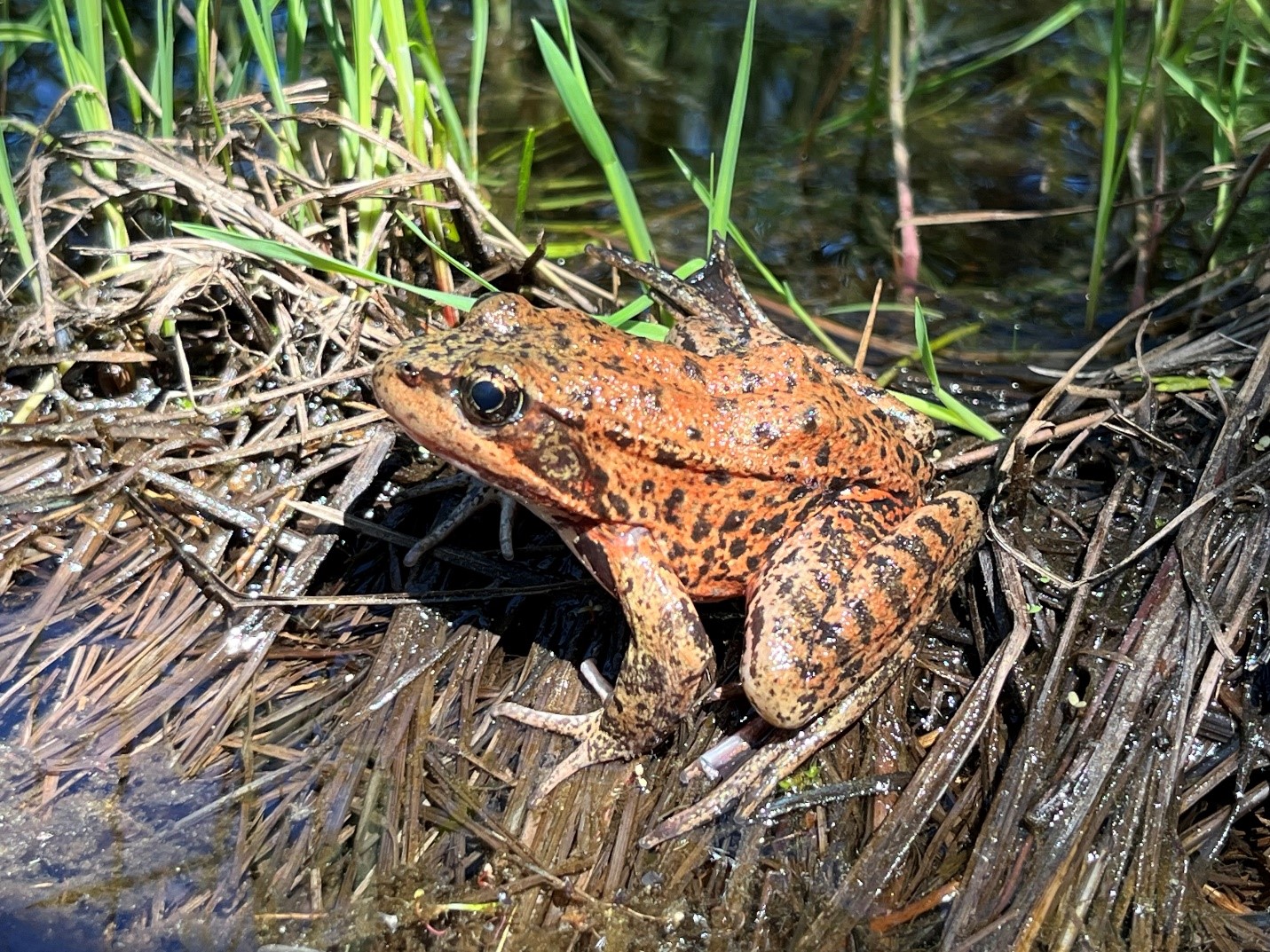
Rob Grasso | NPS Photo
Fire, Drought and Floods, oh my! Seems like nothing can stop the California red-legged frog! Yosemite National Park.
It has been 50 years since California red-legged frogs were seen in Yosemite National Park, pushed out by invasive bullfrogs. Decades long efforts to remove bullfrogs have been successful and in 2019, the park began reintroducing endangered red-legged frogs back into Yosemite Valley. Park biologists were hopeful the frogs could once again thrive in their native habitat but in the years following reintroduction, the frog’s fate seemed uncertain. Breeding sites are a primary indicator of red-legged frog health in Yosemite Valley but attempts to monitor these sites were complicated by wildfire, drought, and flooding. Egg masses were always found in the spring at sites where frogs were reintroduced, but it was not until the spring of 2022 and 2023 when new breeding sites were finally discovered! Continued monitoring will help assess the success of red-legged frog reintroductions in Yosemite National Park.

Michael Reichmuth | NPS Photo
Helping Coho Salmon Fight Climate Change
In the face of climate change, coho salmon (Oncorhynchus kisutch) face more obstacles in their three-year life cycle than ever before. Rising ocean temperatures, erratic precipitation, and other anthropogenic influences have all impacted the spawning and early life stages of the species. Fisheries managers at Point Reyes and Golden Gate are working to protect young salmon during their freshwater stages in life by improving aquatic habitats. Actions include creating cool, sheltered areas with large pieces of wood and restoring creek-side vegetation. Building robust and resilient habitats provide coho salmon with the best possible chance to withstand extreme conditions brought on by climate change.
CESU | NPS Photo
Exciting CESU Projects Happening Across Our Region
The Cooperative Ecosystem Studies Units (CESU) Network is a consortium of federal and non-federal partners that work together to protect our nation’s natural and cultural heritage. CESU’s makes it easy for experts at universities, museums, research institutes, and other organizations to contribute their knowledge and skills to the preservation of public resources. The National Park Service, as well as the Pacific West Region has been an active member of the Network. Check out some of these fascinating projects happening in our California Parks, Hawaii Parks, Pacific Northwest Parks,and Great Basin Parks! Read about stories/research ranging from increasing resilience of endangered Sierra Nevada Yellow-legged Frogs to preserving and rehabilitating Adobe in Death Valley.
Stories of Discovery and Innovation

NPS Photo
Pacific coral reefs as WWII aquatic battlefields – how are they faring now?
During WWII, Guam's reefs became battlefields when the U.S. fought to control the key Pacific Island. Navy forces deployed five tons of explosives on the reefs to clear the way for the landing craft. To investigate how damage to the reef may have impacted the island's ecosystem and coastal vulnerability, NPS researchers conducted remote sensing and diving surveys to map submerged historic artifacts. They also conducted interviews with local residents to learn how WWII-era activities continue to influence the island's ecosystems today. Information from this research will help War in the Pacific National Historical Park care for the ecosystem and guide future research on the reef's ability to bolster coastal resilience.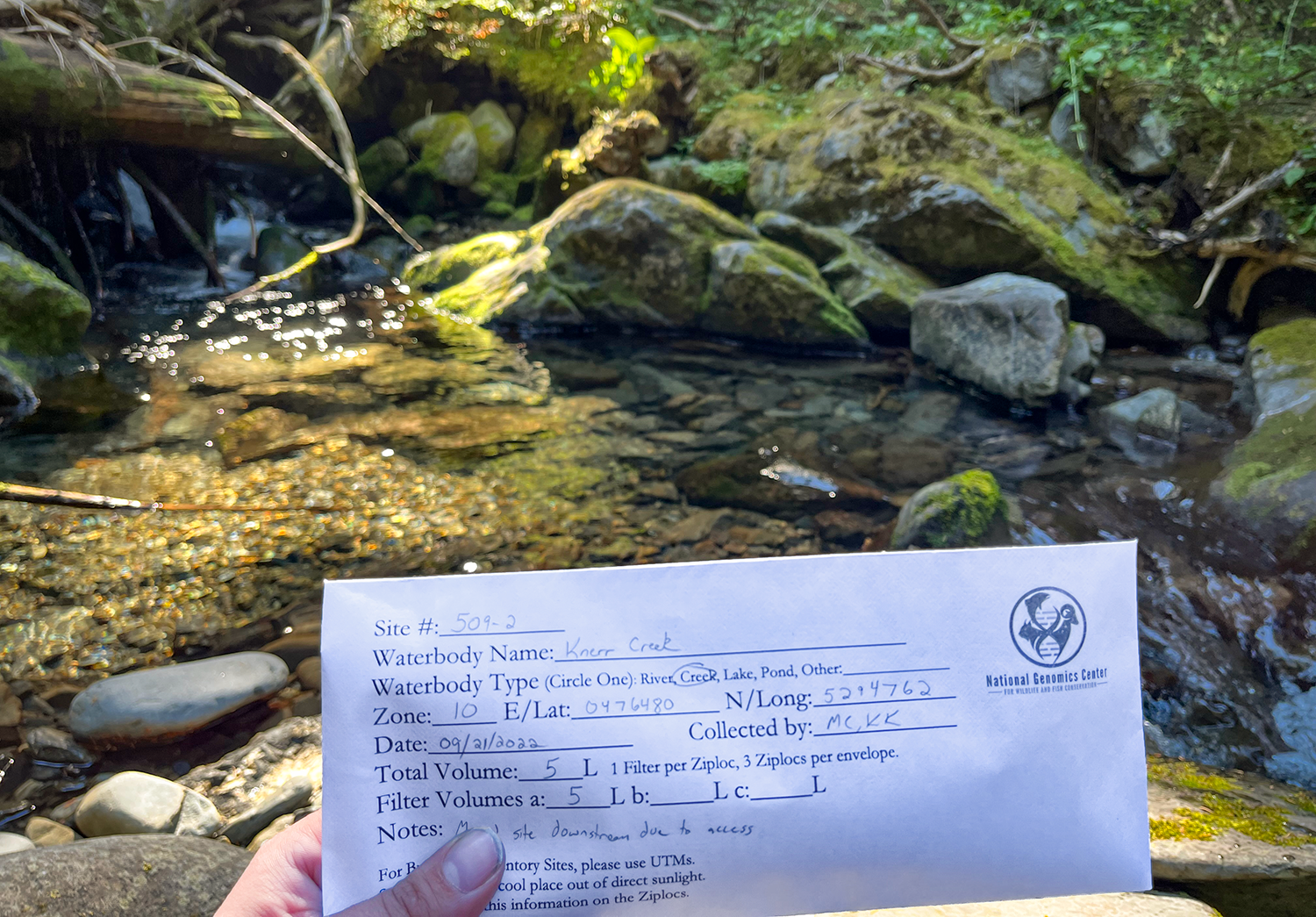
Katie Kierczynski | NPS Photo
Written in the Water: Pacific Northwest Parks Conduct New Genetic Census
Last fall, field teams wrapped up their second season collecting samples at hundreds of streams, rivers, and lakes throughout four national parks in the Pacific Northwest. At each site, biologists pumped water through ultrafine filters to capture microscopic fragments of genetic material. Environmental DNA (eDNA) is an emerging tool that can reveal the whereabouts of nonnative fish, aquatic pathogens, and threatened amphibians. Establishing a baseline status of species that live in these freshwater bodies will allow the parks to detect change and threats to aquatic ecosystems.. Now, scientists await results from the genetic analysis to help inform stewardship decisions ahead.
NPS Photo
29-million-year-old fossil grasshopper nest found at John Day Fossil Beds
Scientists recently described a 29-million-year-old fossil nest and eggs belonging to prehistoric grasshoppers. The fossil was first collected at John Day Fossil Beds National Monument in 2012 and was initially thought to be ant eggs. It was not until 2023 when micro-CT scans were conducted that allowed scientists to look beyond the surface of the fossil and delve deeper into the internal structure, orientation, and microstructure of the eggs. The fossilized features were similar to that of modern-day grasshoppers, not ants as previously thought. No fossil eggs of grasshoppers have ever been found on Earth before! The newly described fossil eggs were named after the first National Park Service superintendent of John Day Fossil Beds National Monument, Benjamin Ladd. The trace fossils (nest) and egg fossils are a testament to the exceptional preservation of the fossil beds at the park and NPS' mission to protect our paleontological resources for scientific discovery.

Ryan Johnston
Turnip Trek: Unveiling Mysteries of Lehman Caves
Great Basin National Park is home to Lehman Caves, one of the longest cave systems in Nevada. Cave turnips, a speleothem or cave formation made by mineral deposits, are globally rare but abundant in Lehman Caves. Since not much is known about this unique formation a team of park employees and volunteers set forth to unravel the mystery of the cave turnip. 1,017 cave turnips were meticulously documented, measured, mapped, and photographed and the data was used to determine overall morphology, how they formed, and relationships with other cave features. A couple of cave turnips were also aged revealing them to be 60,000-250,000 years old! It hypothesized these cave turnips and most speleothems began forming long ago when the climate was wet and cool. Shedding a light on cave turnips gives understanding of the origin of Lehman Caves.
Steve Howell
After the Fire: Birds in the Burn
What happens in a forest after a wildfire? Researchers at Point Reyes National Seashore are discovering how birds are using areas burned in the 2020 Woodward Fire. Results have shown tremendous diversity in the bird community amidst the burned snags and regenerating shrubs. Breeding birds, including year-round residents and migrants from the neotropics, are also raising chicks in the burn scar. Information like this helps us understand how fire intensity influences future habitat quality, as well as inform fire response and post-fire recovery actions.Forging the Future with Youth and Volunteers

NPS Photo
The Buzz about Collaborative Science
Bees of the species Anthophora urbana clementina, endemic to San Clemente Island, were recently sighted at Cabrillo National Monument. The island is located 70 miles offshore and though the discovery is exciting, experts are also alarmed since subtle changes in bee distribution can have immense impacts on local environments. Observations made by community scientists helped scientists monitor these new visitors and no evidence was found that the bees established a population at Cabrillo. Community scientists will help the park remain vigilant as new species are discovered.
NPS Photo
Yosemite Facelift
Scientist-in-Park Abigail Stone Lauer shares her recent experience at Yosemite National Park with their annual Facelift event. Established in 2003 by the Yosemite Climbing Association, the Yosemite Facelift is a volunteer clean-up event held throughout the park. In the earlier years, volunteers were inadvertently collecting historic-era artifacts mistaking them for trash. Today, NPS archeologists are now involved to help volunteers sort through the trash to ensure no historic artifacts are lost and use the event as an opportunity to educate the public on park archaeology. Abigail helped create educational materials and assisted archaeologists by conducting educational talks to the public and local schools regarding historic artifacts.
Park Science and Stewardship is for Everyone

Dan Sullivan | NPS Photo
Terminus: A Glacier Memorial Project
Glaciers in Olympic National Park are rapidly disappearing, leaving empty spaces on the landscape. Working with park scientists and staff, 40 volunteer artists memorialized the remaining glaciers through painting, poetry, music, dance, sculpture, and other media. The Terminus project led to a two-month gallery exhibition that drew over 1,600 visitors, and culminated in a week of performances, scientist and artist talks, and short popup programs for park visitors and members of the local community on the science and future of Olympic’s glaciers.
Pacific Southwest Forest Service | USDA
The Mass Loss of Tanoaks is Changing Forests, but Parks Are Fighting Back
Tanoak trees (Notholithocarpus densiflorus) play an important role in California's mixed-evergreen forest. Their acorns have been and continue to be a staple food for Indigenous People throughout California. However, today, tanoaks are endangered by sudden oak death- a disease caused by a non-native water mold pathogen, Phytophthora ramorum. Today, tanoaks afflicted with sudden oak death have died by the millions, leaving behind less biodiverse, acorn-poor forests. Scientists, land managers, and visitors at Point Reyes National Seashore and Golden Gate National Recreation Area track and share the changes wrought by this disease and set the groundwork to limit its spread.Creating Cultural Connections

NPS Photo
Community Archeology Project at Hawai’i Volcanoes Engages Students with Agricultural Heritage
Nestled in the shadow of Mauna Loa lies one of the Pacific’s most extensive dryland agricultural systems from the 1400s. The exact location of the fields was unknown until recently, when NPS archeologists used GIS models and satellite imagery to locate the site. The park is now partnering with the University of Hawai`i Mānoa to conduct archeological excavations. In addition, the park offered field trips for local elementary and high school students, where they got a chance to work alongside college students in an archeology field school, collecting data and learning Hawaiian history and culture. Their involvement speaks to the ongoing relevance of sustainability and food sovereignty for Hawaiians.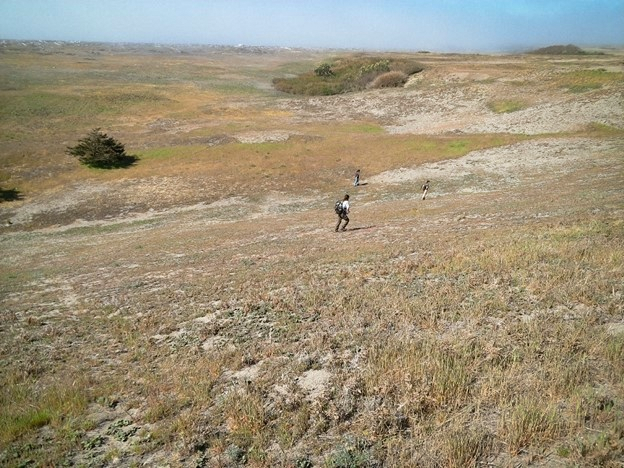
Samish Indian Nation Department of Natural Resources
Working Together to Identify Culturally Significant Plants
The Samish Indian Nation Department of Natural Resources (DNR), in collaboration with the National Park Service, is conducting a multiyear ethnobotanical assessment of San Juan Island National Historical Park’s Special Ecological Areas. Through field surveys, literature review, and interviews with Samish Knowledge Keepers, Samish DNR is identifying culturally significant plant species and locations. This assessment will inform the park’s stewardship actions to preserve these species and locations for generations to come.Building the Bridge: Steps Toward Integrative Resource Management
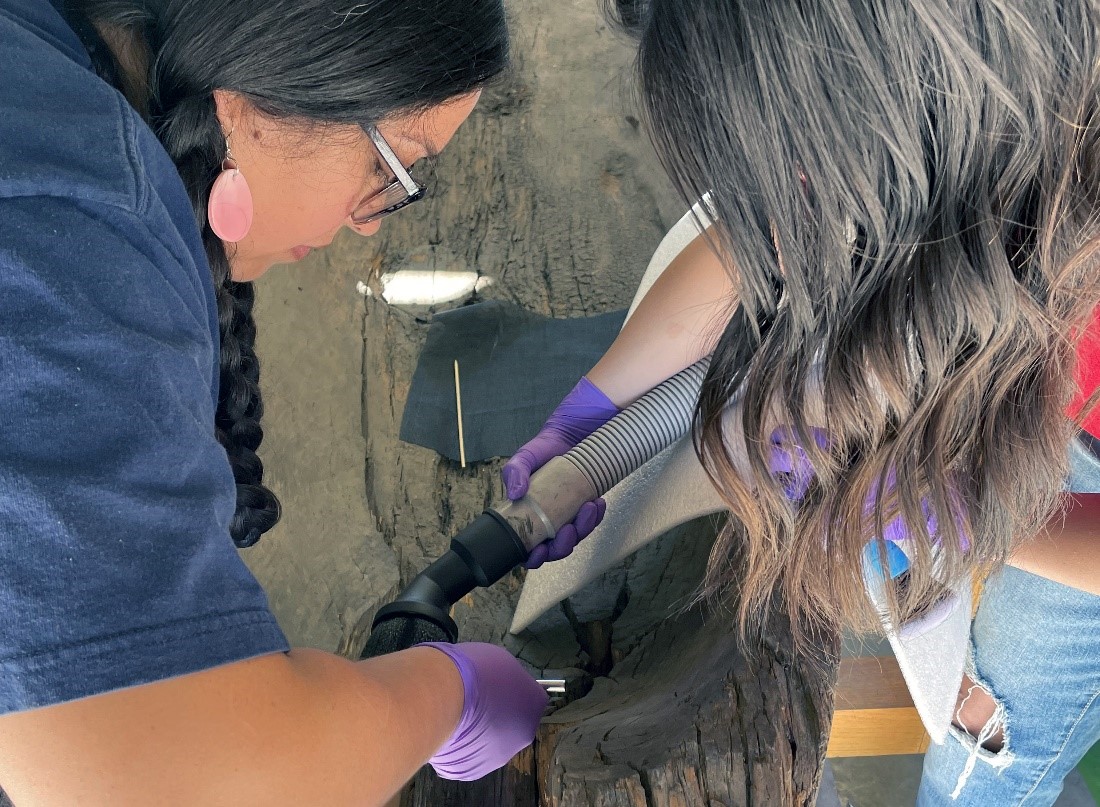
Kristine Leier | NPS Photo
Slowing the Flow of Time: Preservation of Wooden Canoes at Nez Perce National Historical Park
Canoes were essential to the daily life of the Indigenous communities of the Columbia River Plateau, including the Nez Perce. They were used for hunting and moving goods, and allowed for the exchange of ideas between communities bounded by rivers and streams. The hand-hewn canoes in the museum collections at Nez Perce National Historical Park are some of the only surviving examples of this traditional craft. Wooden artifacts face a host of threats that cause decay over time including temperature, humidity, and fungus. Over the last twenty years, the park has taken great strides to stabilize the canoes and slow future deterioration as much as possible. Recently, the park worked with their tribal partners to stabilize the canoes and slow future deterioration. Continued preservation of these artifacts ensures we all have an opportunity to learn about the history and culture of the Columbia River Plateau people.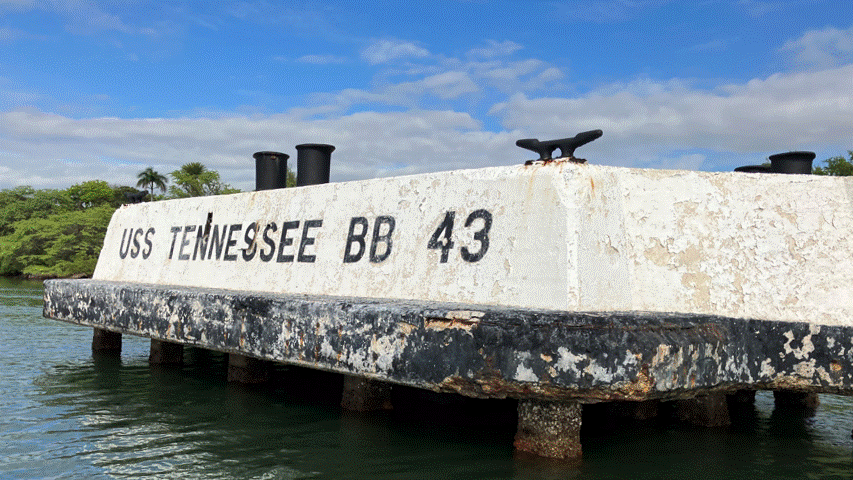
Sara Stratte | NPS Photo
Silent Sentinels: Preserving the Mooring Quays of Pearl Harbor National Memorial
On the morning of December 7, 1943 in the quiet waters of Pearl Harbor, U.S. battleships rested against their mooring quays in Battleship Row. Just before 8:00 am waves of Japanese Imperial Navy airplanes bombarded the battleships in a 90-minute attack. Some of the U.S. sailors on the ships were able to flee their stricken vessels and take refuge on the concrete quays. In 2023, the NPS Historic Preservation Training Center began a multi-year effort to protect the quays of Battleship Row from the ravages of time and saltwater and return them to their 1941 appearance. Experts from the training center are also applying water resistant coatings to the quays to better preserve these structures and help the NPS tell the story of entry of the US into World War II.
Scott Shinton | NPS Photo
Alpine wildflowers, endangered amphibians, and…heirloom apples? Orchards Link Yosemite to Homesteaders Past
Euro-American homesteaders settled in Yosemite Valley in the 1850s and planted vast orchards to feed surging populations of people and livestock in the central Sierras. Many of the original orchard trees still remain; because of this, Yosemite National Park contains one of the most extensive and oldest orchard collections in the national park system. Among these orchards is a small set of unique or rare apple trees, some of which may represent the world’s only remaining specimens of 13 historic heirloom cultivars. Over the past two years, Yosemite staff, Pacific West Region horticulturist and arborist Keith Park, Washington Support Office historical landscape architect Corinna Welzenbach, and local nonprofit partners at the Felix Gillet Institute assisted in propagating these rare apple cultivars to preserve their genetic heritage and little-known piece of Yosemite history.
Gretchen Baker | NPS Photo
Cave Chronicles: Unraveling the Past in Lehman's Historical Inscriptions
Lehman Caves, located at Great Basin National Park, is adorned with over 2,000 inscriptions, unveiling stories of early visitors. In 2023, two groups visited the caves to learn more about inscriptions left by their ancestors. These inscriptions from 1885 and 1934 deepen our appreciation of Lehman Caves' enduring human ties.Science Saves the Day
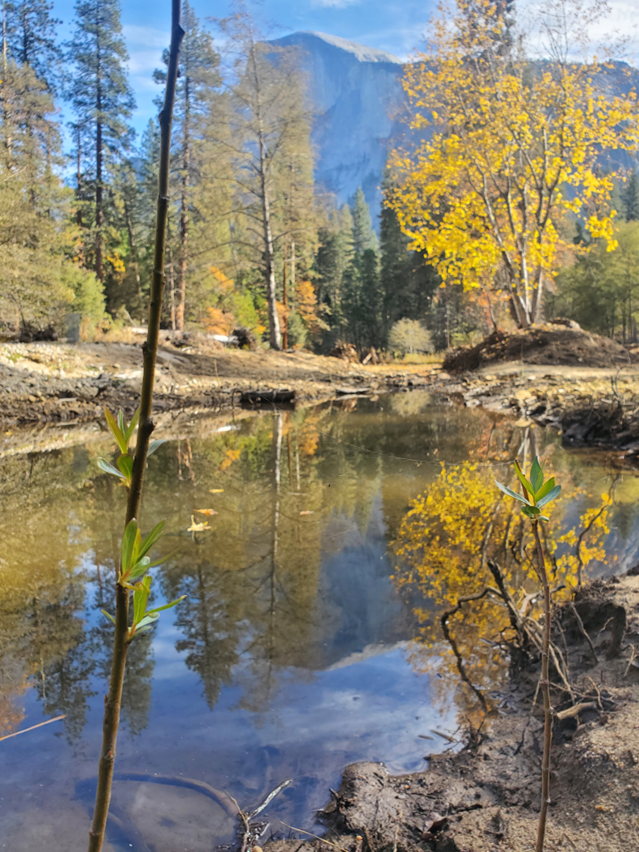
NPS Photo
Course Correction: Section of Campground Returns to Floodplain
The Merced River restoration project is a collection of both passive and active ecological restoration actions to restore ecosystem processes, structure, and composition in the Yosemite Valley corridor of the Merced River. Why do we need river restoration? Starting in the 1850s, settlers occupied Yosemite Valley and built infrastructure, including campgrounds, in the floodplain of the Wild and Scenic Merced River. Development within floodplains hinders natural hydrologic regimes, reduces riparian habitat, and decreases riparian diversity. Lower Pines Campground, located in the floodplain, was washed out in the 100-year flood of 1997. In fall 2023, Yosemite staff completed restoration of 17 acres of former campground back to floodplain.
Jason Ransom | Cascades Carnivore Project | NPS Photo
Conserving At-risk Species in a Landscape of Hydroelectric Power
The North Cascades National Park Service Complex (NOCA) includes a human footprint unique in the national park system: a large hydroelectric power project whose entire footprint is encompassed by NPS-managed lands. As the utility pursues federal re-licensing for several more decades of power generation from three dams in the park complex, park biologists took a deep dive into the conservation needs of at-risk wildlife that share this ecosystem. Their 2023 Focused Condition Assessment investigated 20 bird, 13 mammal, and two invertebrate pollinator species, as well as one mammalian Order (bats), that are currently considered at-risk species in NOCA. Dusting off 25 years of data and records, this comprehensive look at status, risks, research findings, and management needs is providing a voice for wildlife in the new hydroelectric license negotiations.
Karina Rapp | NPS Photo
Radioactive Horses and Hot Weasels: Solving an Age-Old Problem at Hagerman Fossil Beds with Science
Radon is a dangerous radioactive gas that occurs naturally in fossils recovered from the Hagerman Fossil Beds National Monument. High concentrations of this element have caused storage problems for the paleontology collection ever since the monument’s establishment in 1988. Recent research has identified the most effective mitigation strategy and has convinced upper management to fix the problem, creating a safer work environment and reducing park energy costs.
Carolyn Shoulders | NPS Photo
Improving Salmon Habitat As Visitors Watch
The biggest threat to the endangered coho salmon is the lack of good habitat for young fish. Along Redwood Creek within Muir Woods National Monument, rock walls (riprap) were placed along the creek to stabilize its banks, greatly reducing coho salmon habitat. In 2019 and 2023, the park began to remove the historic riprap and add large wood debris to create and enhance salmon habitat. Visitors to the park were able to witness the restoration in action, as Redwood Creek transformed from a highly channelized stream to a more natural and healthy stream for coho salmon.

NPS Photo
Navigating Uncertainties for Giant Sequoias
Hotter and more frequent wildfires are not the only climate change threats giant sequoias face. They are also threatened by drought and attacks by beetles. The National Park Service is calling on its colleagues across governmental agencies, universities, and other organizations to determine the best course of action against these threats.
In 2023, Yosemite National Park organized a diverse group of professionals to discuss these issues. The team ranked 13 hypotheses about proposed actions based on their relevance to management decision-making for Giant Sequoias in the Sierra Nevada. Four hypotheses ranked highly, and the team has chosen to develop projects related to planting Giant Sequoia seedlings following wildfires.
